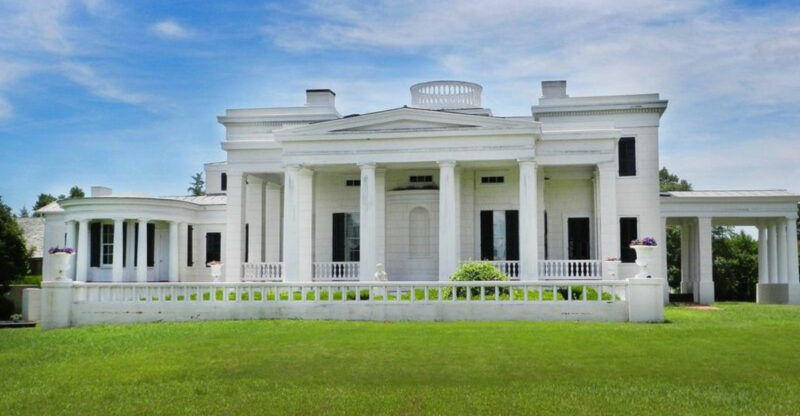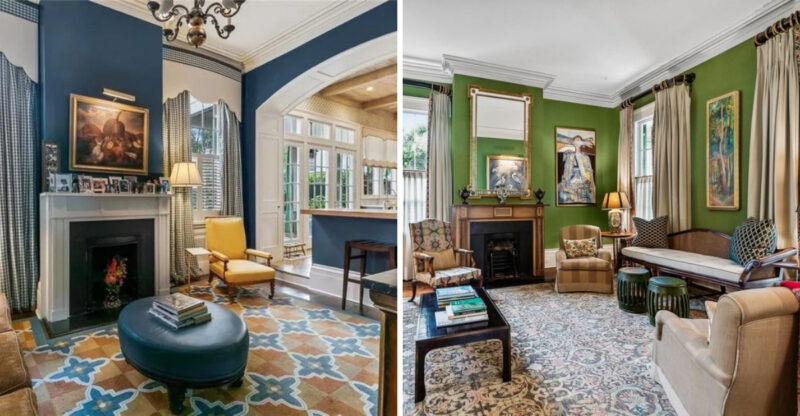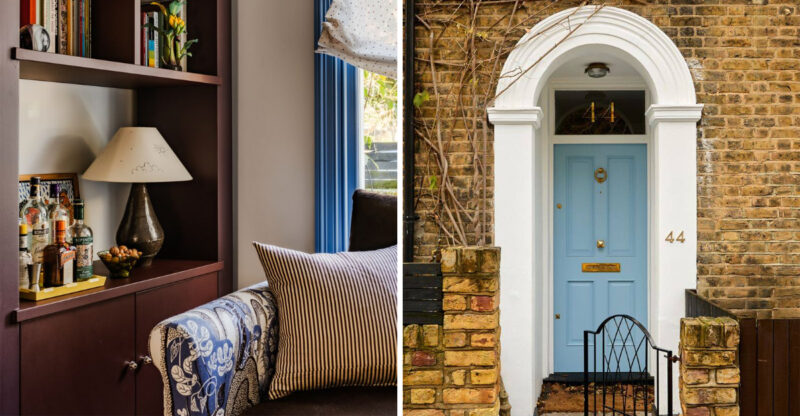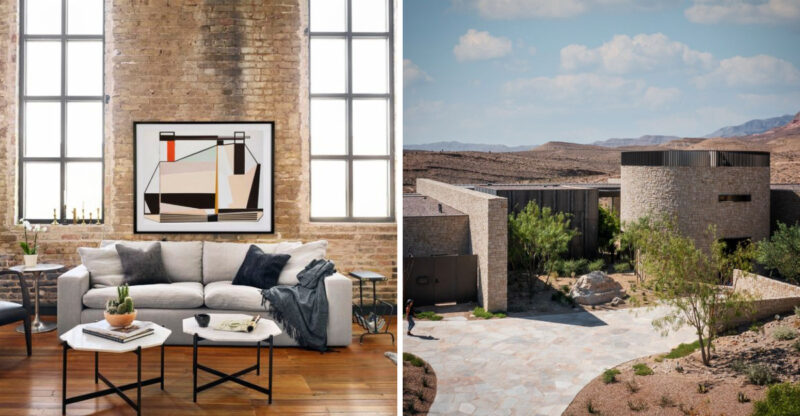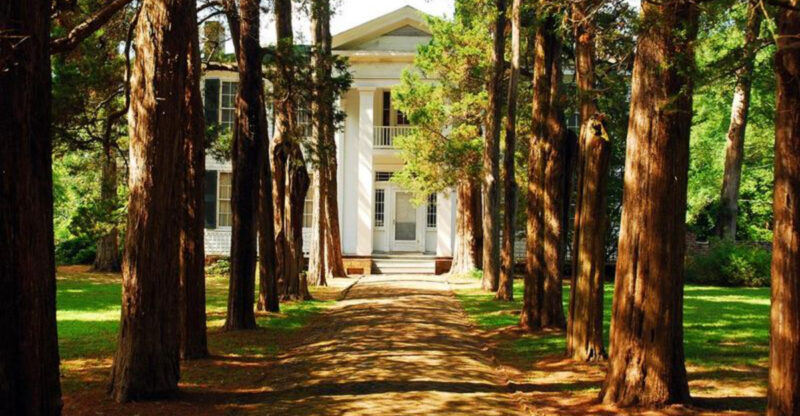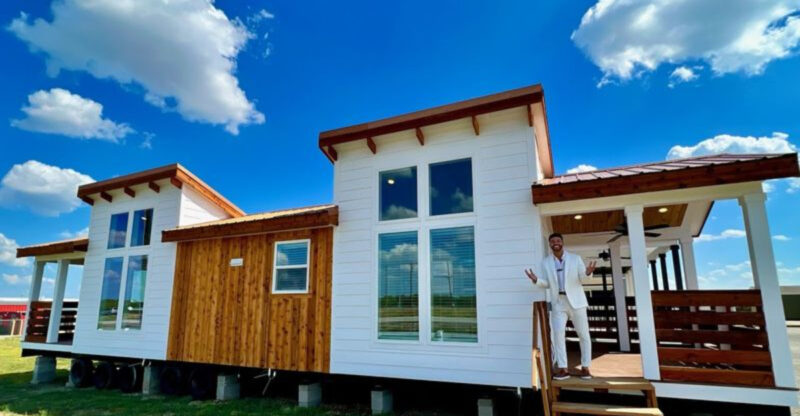Travel Back In Time 15 Historic Homes Preserved Just As They Were
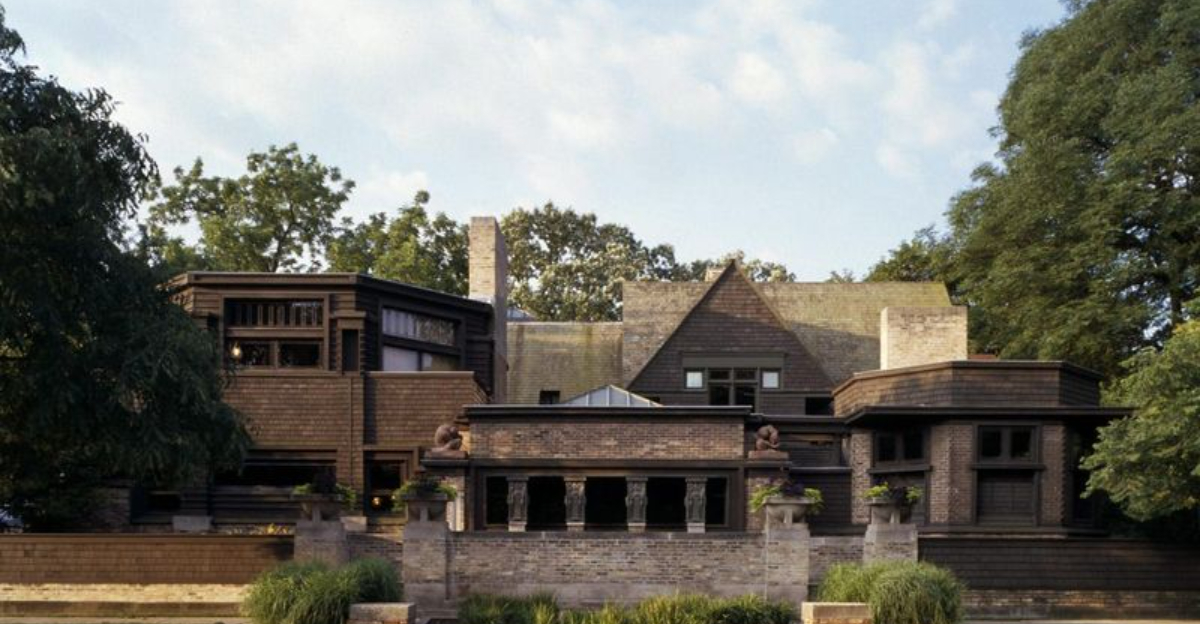
Have you ever wished you could step into a time machine and see how people lived in the past?
Historic homes offer exactly that chance a peek into different eras with all the original furniture, decorations, and personal items still in place.
These preserved houses tell stories about famous people and everyday life from long ago. Let’s explore 15 amazing historic homes across America that look just like they did when their famous owners lived there.
1. Mount Vernon – George Washington’s Estate, Virginia
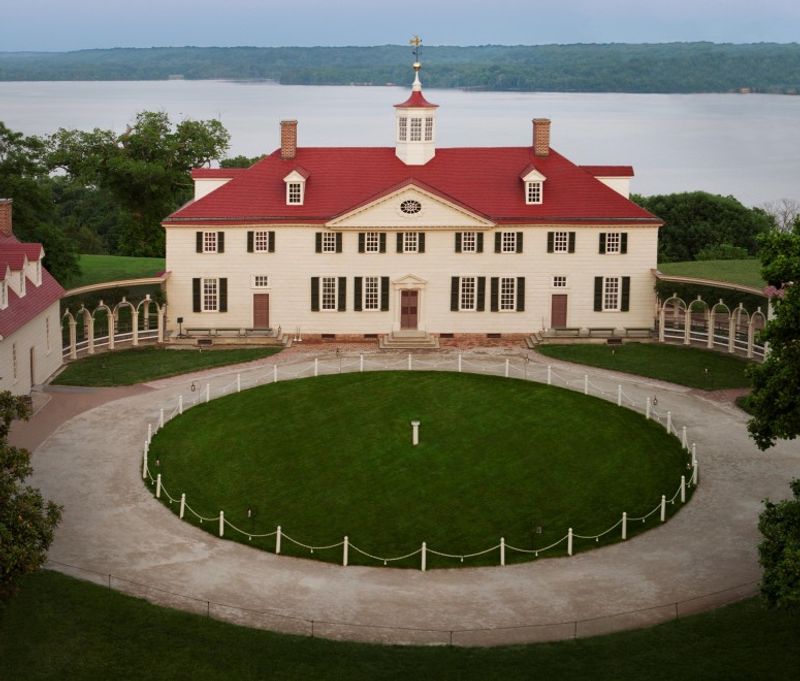
Standing majestically overlooking the Potomac River, Mount Vernon offers a remarkable glimpse into our first president’s private life. Washington personally supervised the expansion of this elegant mansion from a modest farmhouse to the 21-room home we see today.
I was fascinated by the vibrant paint colors and original furnishings that Washington himself selected. The mansion’s large dining room hosted countless important figures during America’s early days.
What surprised me most was seeing Washington’s innovative farm equipment and his experimental crop rotations still visible on the grounds. His study remains exactly as he left it, with maps, books, and personal items arranged just as they were when he died in 1799.
2. Monticello – Thomas Jefferson’s Home, Virginia
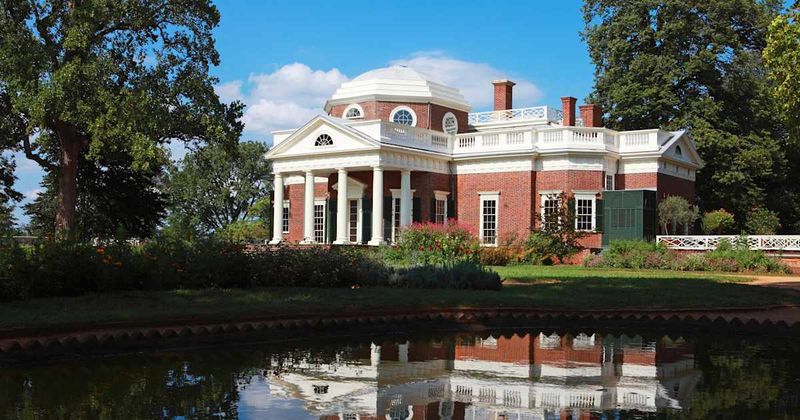
Perched atop a hill near Charlottesville, Monticello showcases Jefferson’s brilliant mind through its innovative design and clever gadgets. The entrance hall alone tells stories of exploration with artifacts from the Lewis and Clark expedition displayed exactly as Jefferson arranged them.
Jefferson’s ingenious inventions are everywhere – a seven-day clock, dumbwaiters built into fireplaces, and even a revolving bookstand that could hold five open books at once. His beloved garden remains planted with the same varieties he grew for experimenting with new crops.
Walking through his private library, I could almost picture him sitting among his 6,500 books, many still on their original shelves. The unique octagonal dome room offers breathtaking views of the countryside Jefferson so loved.
3. The Hermitage – Andrew Jackson’s Home, Tennessee
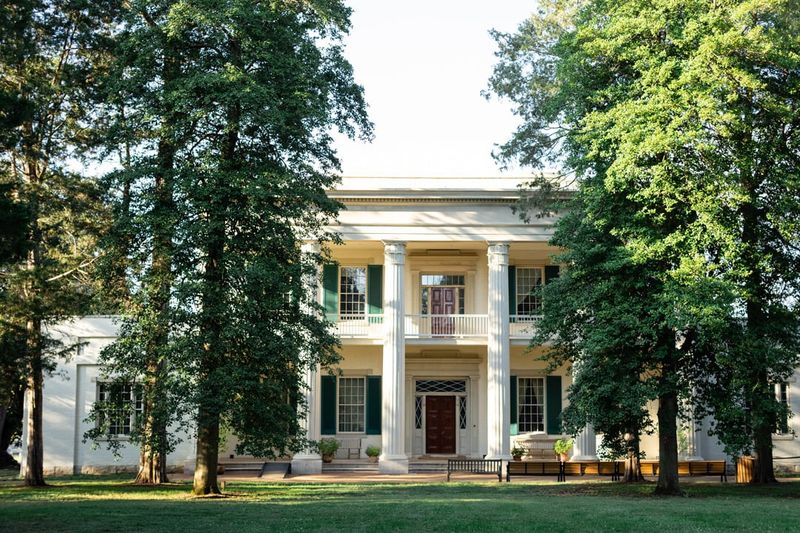
Hidden among ancient trees, The Hermitage reveals a surprisingly elegant side of the rugged seventh president. Jackson’s beloved home still contains about 95% original furnishings – an incredibly rare level of preservation for a historic house.
The bold wallpaper in the entrance hall remains exactly as it was when installed in 1836, featuring Greek mythology scenes that impressed visitors. Jackson’s bedroom remains untouched since his death there in 1845, with his walking cane still leaning against the fireplace.
Though known for his toughness, Jackson’s refined taste shows in the delicate French wallpaper and elegant furniture throughout. The family dining room table is still set with Jackson’s own china and silver, ready as if the president might return for dinner any moment.
4. Louisa May Alcott’s Orchard House – Concord, Massachusetts
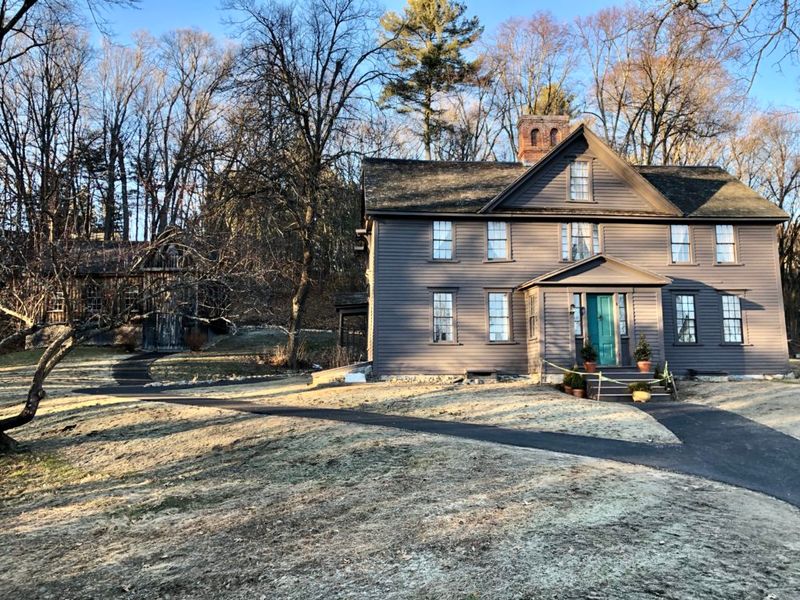
If you’ve read “Little Women,” stepping into Orchard House feels like walking straight into its pages. This humble brown clapboard home remains almost exactly as it was when Alcott penned her famous novel at the small desk in her bedroom.
Her father’s study contains his original books and the desk where he taught lessons. Louisa’s sister May (the real-life Amy) left her artwork on the walls and doors – her drawings and paintings remain untouched since the 1800s.
The kitchen still has the original cast iron stove where the family cooked meals together. Most touching are the personal items scattered throughout – Louisa’s inkwell, the family’s piano, and even a shelf of toys that belonged to Lizzie, the sister who inspired Beth’s character.
5. Emily Dickinson Homestead – Amherst, Massachusetts
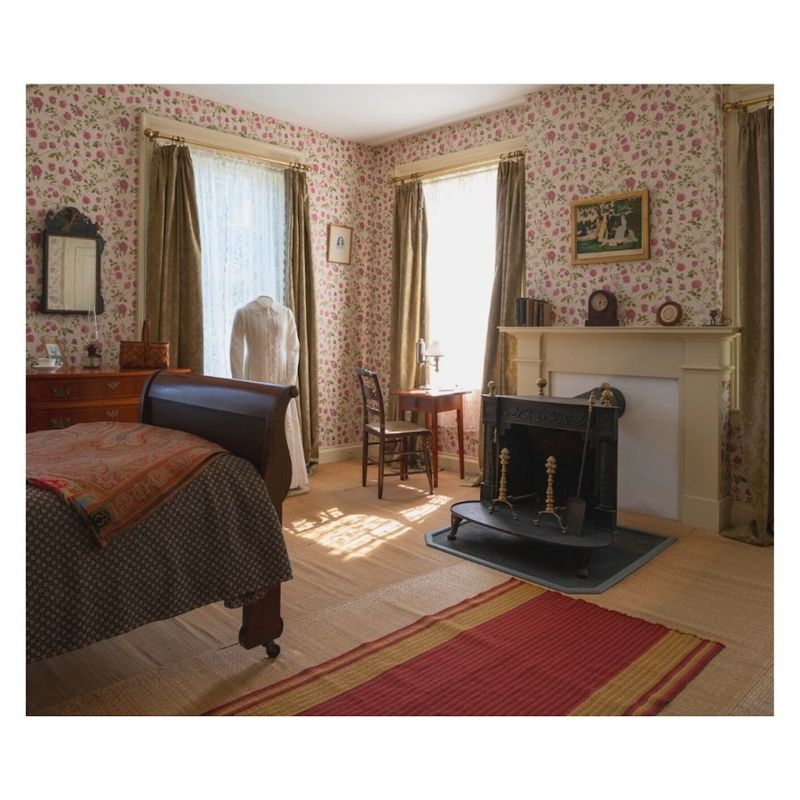
Wrapped in mystery like its famous resident, the Dickinson Homestead preserves the secluded world where America’s beloved poet crafted her revolutionary verses. Emily’s bedroom remains exactly as it was, featuring the small writing desk where she penned nearly 1,800 poems, with only a handful published during her lifetime.
Her garden views through the windows inspired countless nature references in her work. The conservatory where she tended her beloved exotic plants has been meticulously restored based on family records.
When visiting, I was struck by how the home’s formal parlors contrast with Emily’s simple private spaces. The dining room table where she secretly lowered baskets of gingerbread to neighborhood children still stands in its original spot, bringing to life the woman who became increasingly reclusive yet connected deeply through her words.
6. Mark Twain House – Hartford, Connecticut
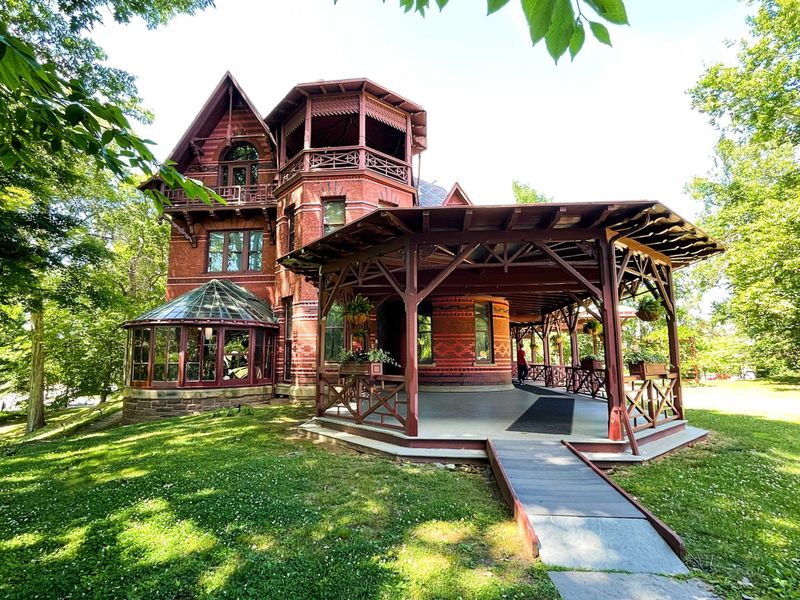
Bursting with personality like its famous owner, Mark Twain’s Victorian Gothic mansion surprises visitors with its boldness. The author lived here during his most productive years, writing classics like “The Adventures of Tom Sawyer” and “Adventures of Huckleberry Finn” in the third-floor billiards room that served as his study.
Twain’s love of technology shows throughout – the house had one of America’s first telephones and a then-cutting-edge heating system. His daughters’ bedrooms remain filled with their toys and books, while the elaborate guest room hosted literary giants like Harriet Beecher Stowe.
The most striking feature is the ornate entrance hall with its hand-stenciled wallpaper and carved wood panels imported from Scotland. Twain’s beloved billiards table remains in his study, where he would entertain friends with stories that would later appear in his books.
7. Biltmore Estate – Asheville, North Carolina

America’s largest private home still takes visitors’ breath away with its 250 rooms preserved exactly as they were when the Vanderbilt family entertained Gilded Age elites. George Vanderbilt’s massive library contains 10,000 volumes with his personal bookplate, arranged just as he left them.
The indoor swimming pool and bowling alley were technological marvels for 1895. Family photographs sit on bedside tables, while Edith Vanderbilt’s clothing hangs in closets as if she might return any moment to select an evening gown.
Though grand in scale, intimate touches make this mansion feel like a home – George’s walking sticks remain in the umbrella stand, and the breakfast room table is set with the family’s everyday china. The original electric call button system still runs through the walls, once summoning servants from their quarters to attend to the family’s needs.
8. Hearst Castle – San Simeon, California
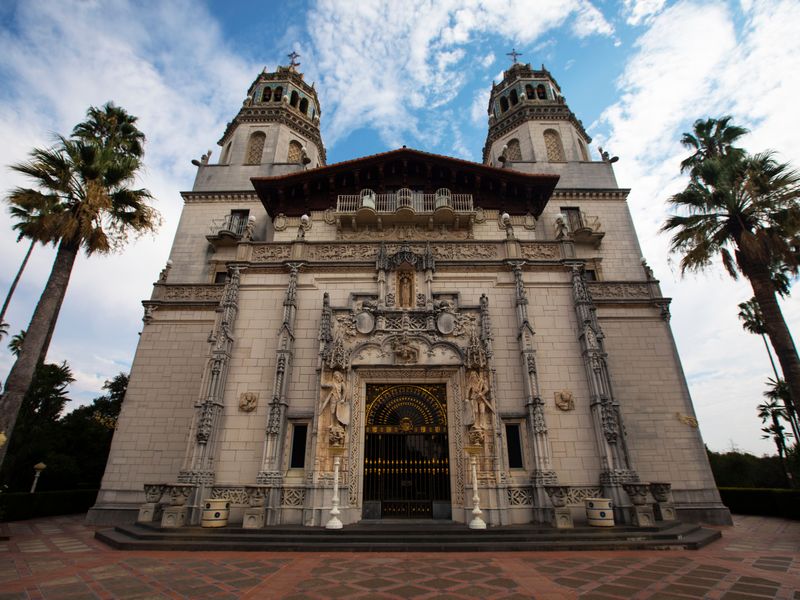
Rising like a Mediterranean dream on California’s central coast, newspaper tycoon William Randolph Hearst’s extravagant retreat remains frozen in Hollywood’s Golden Age. The Neptune Pool still sparkles with its authentic Roman temple façade and original marble statues positioned exactly as Hearst arranged them.
Movie stars’ signatures fill the guest books displayed in rooms where they once stayed. Hearst’s personal art collection – ancient Greek vases, Renaissance paintings, and medieval tapestries – remains exactly where he placed each piece.
The grand Gothic dining hall still has Hearst’s silver condiment sets on the long table where he entertained celebrities and politicians. Most fascinating are the personal touches amid the grandeur – Hearst’s bedroom contains his reading glasses on the nightstand and favorite books nearby, while ketchup bottles remain on the dining table (he insisted on having them available at every meal).
9. Tenement Museum Apartments – New York City, New York
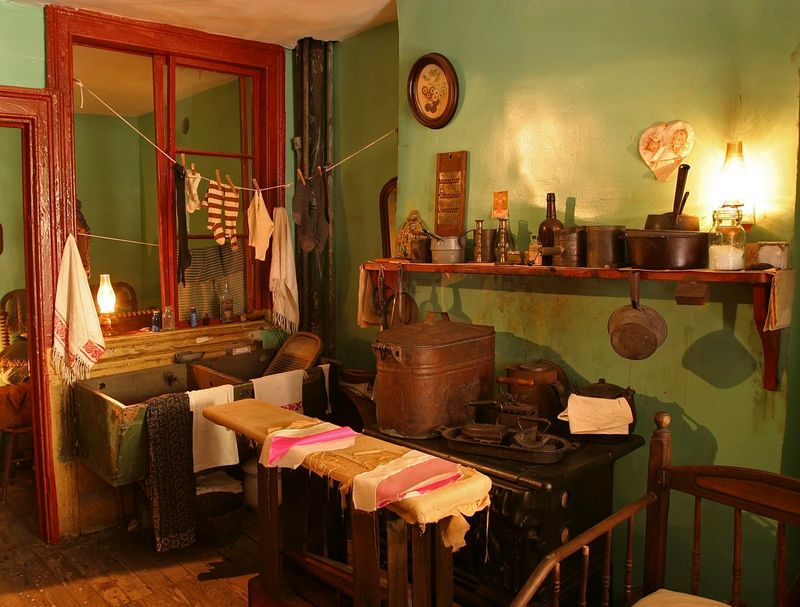
Unlike grand mansions of the wealthy, these preserved apartments on New York’s Lower East Side tell stories of ordinary immigrant families who shaped America. Each apartment in this 1863 tenement building has been meticulously restored to represent different eras and families from German Jews in the 1870s to Italian Catholics in the 1930s.
The Levine family’s apartment contains their actual sewing machines used for their garment business. Cooking utensils, family photographs, and religious items remain positioned exactly as discovered through extensive research into each family’s life.
What moved me most were the children’s toys – marbles, dolls, and homemade games – showing how even in cramped quarters with shared toilets and no running water, these families created homes filled with love. The worn linoleum floors and peeling wallpaper tell honest stories about immigrant life that grand mansions cannot.
10. Ernest Hemingway Home – Key West, Florida
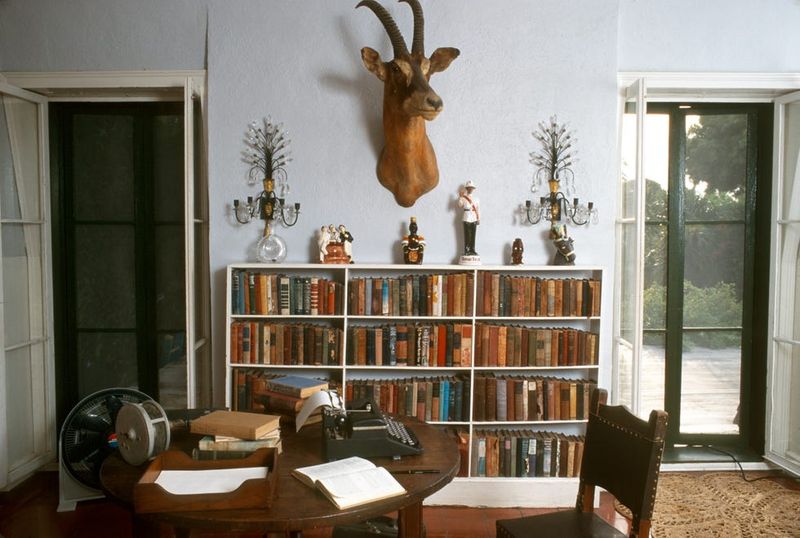
Surrounded by tropical gardens and famous six-toed cats, Hemingway’s Spanish Colonial retreat appears frozen in the 1930s when he wrote some of his greatest works here. His second-floor writing studio remains untouched, with his Royal typewriter positioned on the desk where he worked each morning.
The swimming pool – the first in Key West and costing more than the house itself – still sparkles in the Florida sunshine. Hemingway’s personal library contains books with his handwritten notes in the margins, while hunting trophies from his African safaris hang on the walls exactly as he placed them.
Descendants of Hemingway’s original cats still roam the property, many with the distinctive six toes their ancestors had. The comfortable furniture throughout reflects the casual Key West lifestyle that inspired works like “To Have and Have Not” – you can almost picture Papa himself returning from deep-sea fishing to relax on his favorite couch.
11. Betsy Ross House – Philadelphia, Pennsylvania
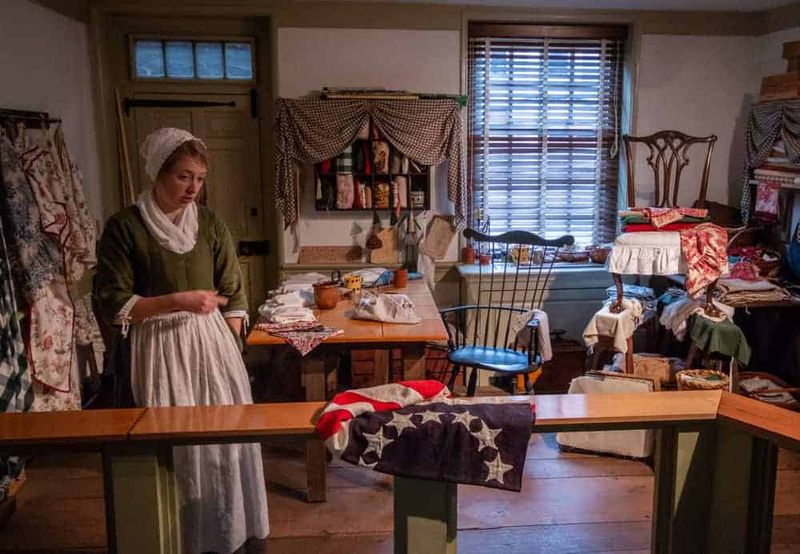
Tucked away on a narrow Philadelphia street, this humble home transports visitors to 1777 when Betsy Ross reportedly sewed the first American flag. The tiny upholstery shop on the first floor contains Betsy’s original tools – scissors, thimbles, and thread winders positioned as if she just stepped away.
Her bedroom upstairs features the slat bed typical of colonial times, covered with hand-stitched quilts researched to match what she would have used. The kitchen’s open hearth still has the cooking implements Betsy would have used to prepare meals while running her business.
Though small compared to grand historic mansions, this modest home powerfully connects visitors to everyday colonial life. The sitting room where Betsy reportedly met with George Washington to discuss the flag design remains arranged with simple period furniture, demonstrating how ordinary citizens played extraordinary roles in America’s founding.
12. House of the Seven Gables – Salem, Massachusetts
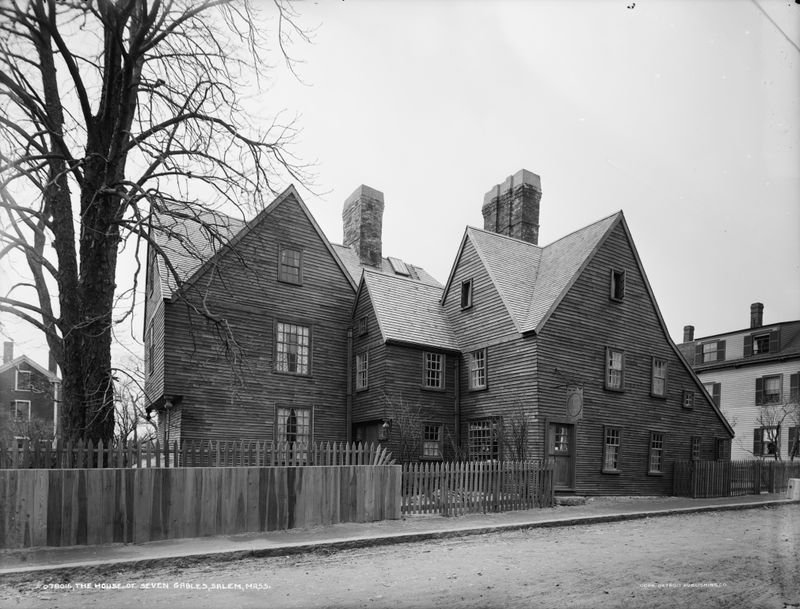
Shrouded in mystery and immortalized by Nathaniel Hawthorne’s novel, this 1668 seaside mansion reveals four centuries of New England life through its preserved rooms. The secret staircase hidden within the walls – a narrow, steep passage believed to have hidden fugitives – remains exactly as it was constructed, worn smooth by countless footsteps.
Original wood paneling throughout the house shows ax marks from colonial craftsmen. The counting room where merchants once conducted shipping business still contains ledgers and quill pens positioned as if the owner might return to finish calculations.
Most fascinating is how each room represents different periods of the home’s long history – from sparse Puritan furnishings to Victorian opulence. The attic room where a young Hawthorne visited his cousin remains as it was when he gained inspiration for his famous novel, complete with exposed beams and simple furnishings that sparked his literary imagination.
13. Wright’s Home and Studio – Oak Park, Illinois
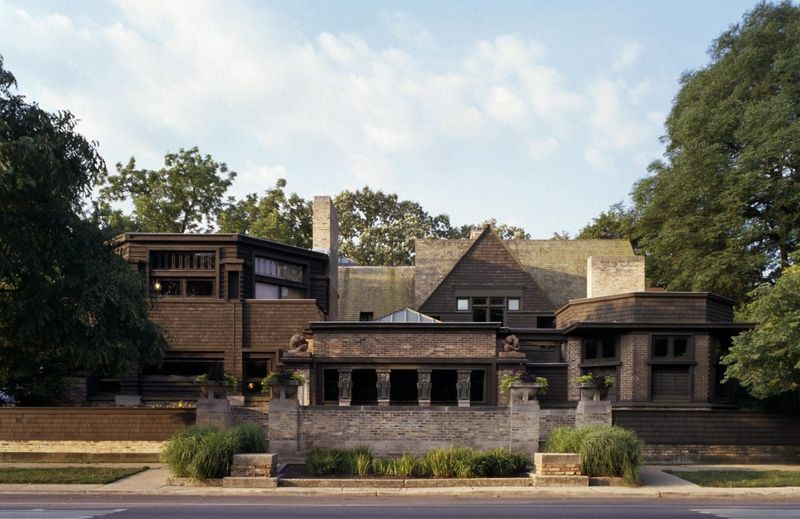
Frank Lloyd Wright’s revolutionary ideas about organic architecture come alive in his own home and studio, preserved exactly as it was during his most creative period. The playroom he designed for his children features built-in cabinets with geometric cutouts that cast magical light patterns, showcasing how Wright believed even family spaces should be beautiful.
His drafting room remains filled with drawing tables where apprentices worked under his guidance. Original Wright-designed furniture demonstrates his belief that interior elements should harmonize with the architecture.
What fascinated me most were the experimental elements Wright tried in his own home before incorporating them into client projects. The dining room’s unusual barrel-vaulted ceiling and built-in seating show Wright testing ideas that would later define American architecture. Even the light fixtures remain exactly as Wright designed them, filtering light through art glass to create the specific atmosphere he envisioned.
14. John Adams Birthplace – Quincy, Massachusetts
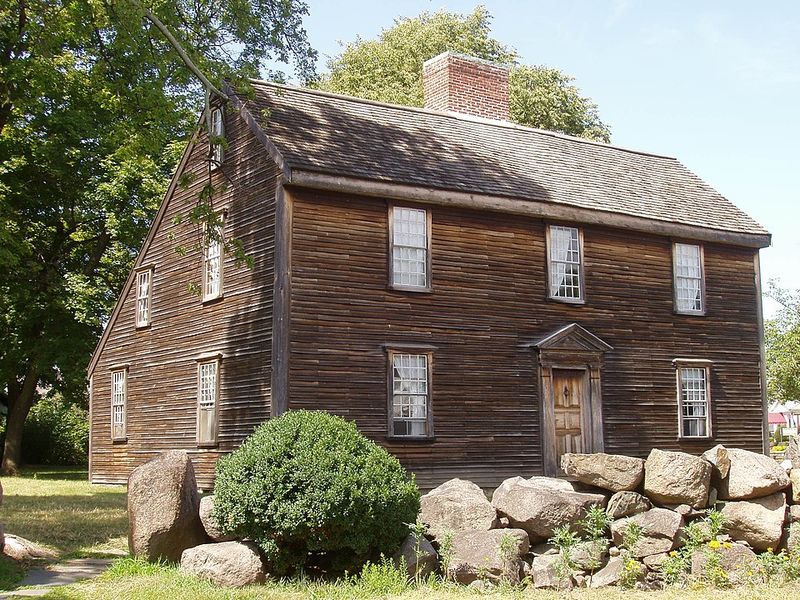
Humble yet dignified, this saltbox farmhouse reveals the modest beginnings of America’s second president and his son, the sixth president. The tiny parlor where John Adams was born in 1735 contains the actual cradle used by generations of the Adams family.
Original wide-plank floors show centuries of wear from the footsteps of this remarkable family. The kitchen hearth remains the heart of the home, with cooking implements and pewter dishes arranged as they would have been when Abigail Adams prepared meals here.
Though simple by today’s standards, these rooms housed extraordinary ambition and intellect. John’s father’s cobbler tools remain in the corner where he taught his son the value of hard work. Most touching is the small desk where young John studied by candlelight before becoming a lawyer, revolutionary leader, and president – a powerful reminder that America’s founding generation emerged from ordinary homes like this one.
15. Paul Revere House – Boston, Massachusetts
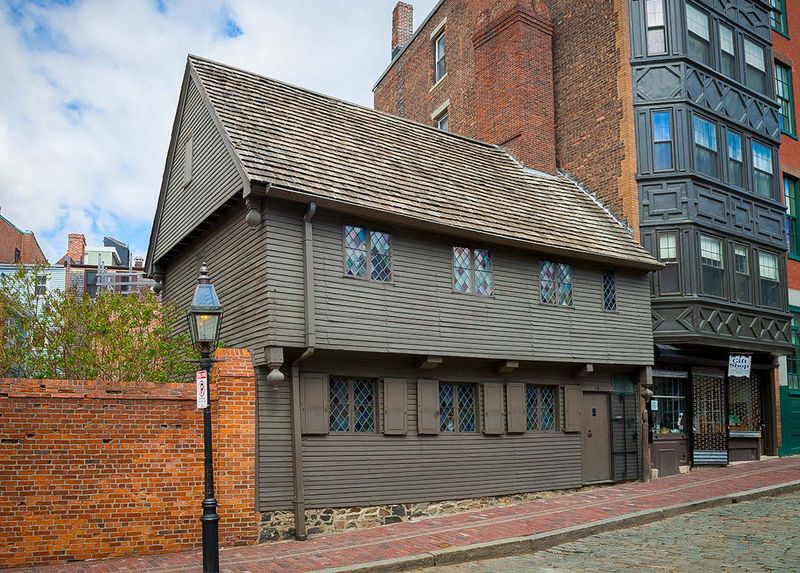
Standing defiantly amid Boston’s modern skyline, this medieval-style timber house from 1680 remains the oldest building in downtown Boston. The home Paul Revere purchased in 1770 and lived in during his famous midnight ride has been restored to appear exactly as it did when his large family occupied these rooms.
Original period furniture includes a rare American-made gate-leg table and Revere’s own possessions. The second-floor chambers contain rope beds with straw-filled mattresses where the Revere children slept.
The kitchen’s massive hearth remains the focal point, with cooking tools and utensils positioned as they would have been when meals were prepared here. Though Revere was a silversmith, his home reflects middle-class colonial life rather than luxury. The front parlor where he likely greeted customers interested in his metalwork contains examples of his craftsmanship, including silver pieces made by his own hands.

